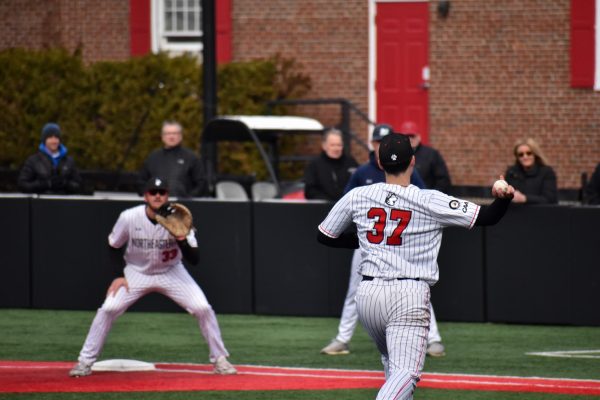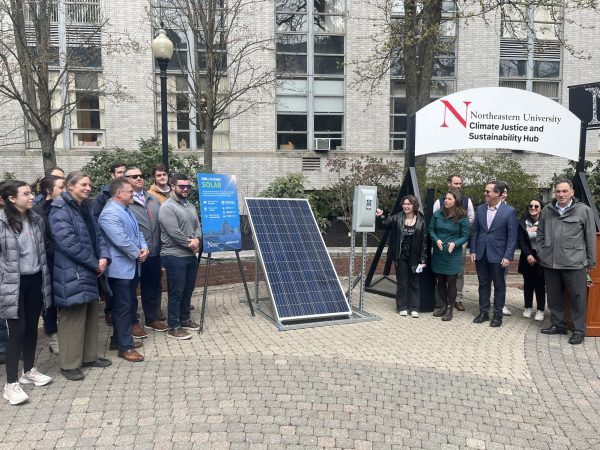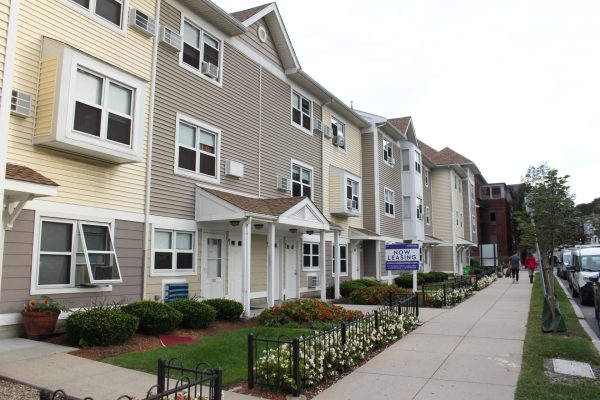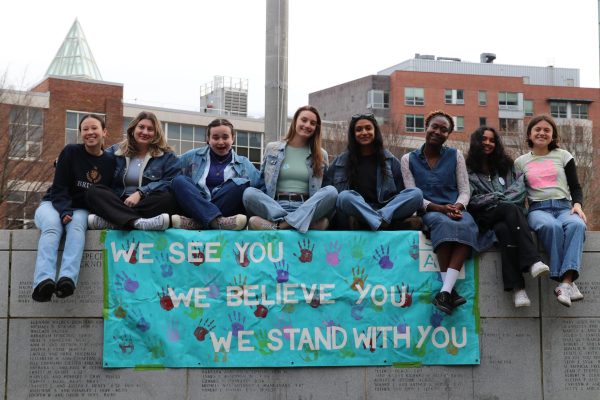Environmental injustice remains prevalent in low-income, minority populations
"Pollution" by bob august is licensed under CC BY-NC-SA 2.0
Air pollution is just one of the environmental injustices faced by low-income and minority communities, and it is worsened by the operation of incinerators and compressor stations.
February 5, 2021
Enbridge Inc., an international energy transportation company, announced in October 2020 the delayed beginning of operation of the gas compressor station in Weymouth. This announcement came after the station had two emergency shutdowns in September, which caused the unplanned release of natural gas into the nearby area.
On Saturday the station began operations after Enbridge said in a public statement that it “identified and addressed” any safety concerns. However, Enbridge spokesperson Max Bergeron refused to release reports made by the federal Pipeline and Hazardous Materials Safety Administration on the September shutdowns.
Residents of the surrounding areas have protested against the building of the compressor station since before the project was confirmed in 2017. It is located on the Fore River Bridge in Weymouth. Fore River Residents Against the Compressor Station opposes the project because they say it will create air and noise pollution, as well as odor problems for South Shore residents. Weymouth and the surrounding areas are designated environmental justice, or EJ, communities. These environmentally disparaged communities are often used as sites for dangerous projects such as the Weymouth compressor station.
The situation in Saugus, Mass. is another example of a previously burdened community being encumbered by additional environmental concerns. The landfill and incinerator in Saugus, operated by Wheelabrator Technologies, releases cancer-causing chemicals into the air and water in Saugus, Lynn and Revere. It has impacted the residents of these communities for generations, which is evident by the extremely high rates of cancer and other illnesses in the surrounding area. The companies that run these facilities blame the lifestyles of the residents for the high rates of disease. Many EJ communities in Massachusetts and the country are facing similar problems and are unable to fight back against these large companies.
A community is considered an EJ community in Massachusetts if it meets any of three criteria: “Its median household income is equal to or less than 65% of the statewide median, 25% or more of the residents identify as a race other than white and/or if 25% or more of households have no one over the age of fourteen who speaks English only or very well.”
Massachusetts began labeling certain areas as EJ communities in 2002 when the Executive Office of Energy and Environmental Affairs created an Environmental Justice Policy meant to deliver necessary resources to low-income communities and communities of color to combat environmental burdens placed on them. In 2014, former Gov. Deval Patrick issued an executive order to update the policy to ensure that disproportionately afflicted areas remain a priority for Massachusetts’ executive branch, and the policy was updated again in 2017. However, the current policy in place has been deemed ineffective by many environmental activists and residents of EJ communities.
Amy Laura Cahn, a senior attorney and the interim director for healthy communities and environmental justice at Conservation Law Foundation, considers the existing executive order and policies to be “woefully insufficient.”
“Persistently there has been a lack of attention or enforcement or available tools for these communities to be able to protect themselves,” Cahn said.
Legislation has been proposed for many years to require action to be taken against injustice in EJ communities. Cahn emphasized the need to modify and then codify aspects of the existing policies. This will require greater public participation and heightened environmental review in EJ communities that the current policies do not require.
Former Massachusetts Rep. RoseLee Vincent, who represented Revere and Saugus until this month and whose time on the Massachusetts legislature can be characterized by fighting against the environmental injustice posed by the Wheelabrator Saugus ash landfill and incinerator, regards “environmental justice” as a “feel-good term.” She believes that codifying EJ policies into law is necessary to give the policies a greater impact because many designated EJ communities do not receive any tangible help and continue to face environmental injustices that they are unable to effectively oppose.
“Unfortunately, in environmental justice communities, people often don’t have the education, the resources or the time to get active, or they don’t even know how to get active,” Vincent said.
On Jan. 4, the Massachusetts legislature passed an act that establishes a roadmap for Massachusetts’ climate policy. The act, titled “An Act Creating a Next-Generation Roadmap for Massachusetts Climate Policy,” increases protection for EJ communities. It more strictly defines an EJ population and strengthens environmental protections for these vulnerable communities. Even though Gov. Charlie Baker vetoed this legislation, the Massachusetts Legislature is planning to immediately refile and fast-track the bill.
“Today, we send a message loud and clear that Massachusetts will empower our environmental justice communities,” Massachusetts House Speaker Ron Mariano said in a statement.
Environmental justice emerged from environmental racism; the distribution of risks and benefits in this country is based on racist policies such as housing segregation. Therefore, communities of color, immigrant and refugee communities and low-income areas are almost always disproportionately impacted by environmental burdens. This means their health is at greater risk, and they have the least access to environmental benefits, or things that enhance health and the environment. The EJ movement was created with the goal of amending historic injustices and ensuring that neglected groups have equitable access to environmental resources and health.
Nathan Phillips, professor of geography and the environment at Boston University and adamant opponent of the Weymouth compressor station, believes the construction of the project would not have been allowed in a white or wealthier community. Weymouth is a low-income community.
“The political power in an affluent and mostly white community would’ve pushed back and mounted the political opposition that wouldn’t have allowed it,” Phillips said. “That’s why these facilities end up in working-class and minority communities.”
The COVID-19 pandemic has made the disparities that EJ communities face abundantly clear. According to Cahn, people living in communities of color and low-income communities in Massachusetts are at risk because they are breathing air that has degraded in quality over time due to environmental racism. Many residents of EJ communities are essential workers who are unable to avoid coming into daily contact with other community members and oftentimes rely on public transportation to get to work.
“There is an intersection between communities that are overburdened with respect to the air quality and communities that are overburdened with respect to the impacts of COVID-19,” Cahn said.
While the existing environmental justice policies have created a foundation for the EJ movement, they have not been enforced, leaving EJ populations to be further harmed each day, considerably more so due to the COVID-19 pandemic.
“We’ve always needed this [environmental justice] legislation,” wrote Staci Rubin, a senior attorney at Conservation Law Foundation and an environmental justice advocate, in a Conservation Law Foundation blog post. “The pandemic is just exposing and illustrating how important and critical it is that this gets passed now.”
EJ communities are dealing with extensive cumulative burdens and receiving no benefits, and this puts the residents of these places at extreme risk in regards to their health and well-being.
The environmental justice provisions of Massachusetts’ climate bill are long overdue according to resident groups and environmental activists. If it passes, there is no guarantee that this new legislation will rectify the environmental inequities for EJ communities across the Commonwealth.


















